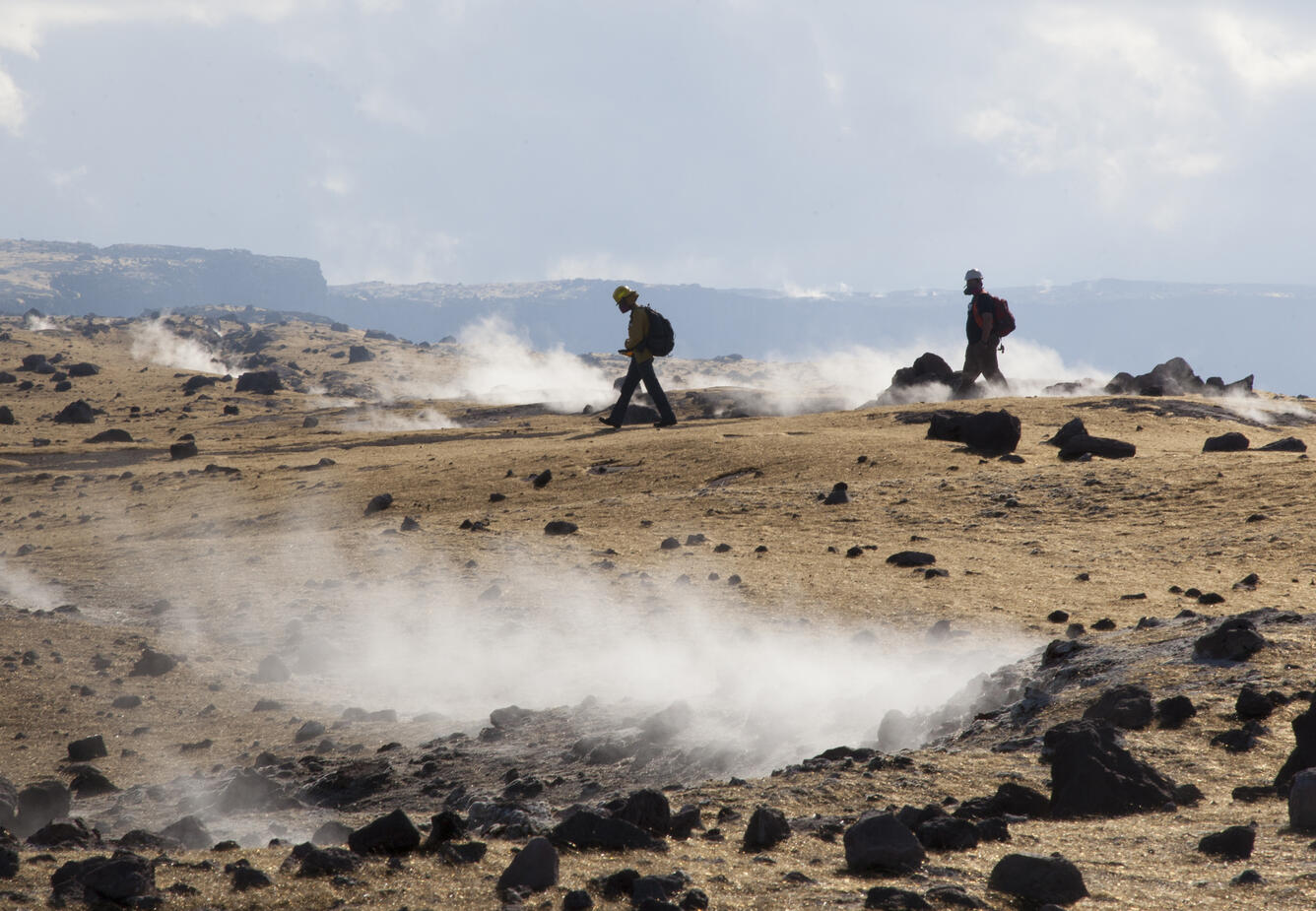Volcano Watch — Amber waves of … Pele's hair?
The lava lake within Halema‘uma‘u Crater at the summit of Kīlauea Volcano is creating a scene remindful of a messy barbershop floor, except that it's acres and acres wide rather than a few square feet. The ground downwind of the crater is strewn with Pele's hair, and it is almost impossible to avoid stepping on it.
Such a scene has not been reported before at Kīlauea. What's happening?
Pele's hair consists of long glass fibers that form when gas bubbles burst in the lava lake. Pieces of the fluid bubble skin are propelled violently into the air, drawing out into long, hair-like strands that cool to a golden-colored glass. Since the lake is bubbling almost constantly, large volumes of Pele's hair are made daily. The resulting hair blows downwind from Halema‘uma‘u, across the caldera, and into the Ka‘ū Desert.
The Pele's hair collects against embankments, such as gully walls or curbs in the now-closed Halema‘uma‘u Crater parking lot. It also is strewn across the ground surface, catching on small rocks and ultimately creating a web of interwoven hair. The web is streamlined, with most pieces of hair aligned with the wind direction.
When a south (kona) wind blows, Pele's hair can easily reach the Jaggar Museum Overlook area in Hawai‘i Volcanoes National Park, where it drapes ‘ōhi‘a like tinsel on a Christmas tree.
Drifts of Pele's hair can survive for years and even decades, but, once the eruption has ended, wind will strip the hair from most surfaces. The photos included here show scenes that many will never see first-hand, because most of the Pele's hair is blown downwind of the summit vent—an area of the national park that has been closed since 2008 due to elevated sulfur dioxide emissions and other ongoing volcanic hazards.
Volcano Activity Update
Kīlauea continues to erupt at its summit and East Rift Zone. This past week, the summit lava lake level rose and fell in concert with summit inflation and deflation, varying mostly between 5 m and 17 m (16–56 ft) below the vent rim, but briefly overflowing the vent on October 15. The 61g lava flow continued to enter the ocean near Kamokuna. The lava flow does not pose an immediate threat to nearby communities.
Mauna Loa is not erupting. Seismicity remains elevated relative to the long-term background rate, with small earthquakes occurring mostly in the volcano's south caldera and upper Southwest Rift Zone at depths less than 5 km (3 mi). Deformation related to inflation of a magma reservoir beneath the summit and upper Southwest Rift Zone continues, with inflation occurring mainly in the southwestern part of the magma storage complex.
No earthquakes were reported felt on the Island of Hawai‘i this past week.
Get Our News
These items are in the RSS feed format (Really Simple Syndication) based on categories such as topics, locations, and more. You can install and RSS reader browser extension, software, or use a third-party service to receive immediate news updates depending on the feed that you have added. If you click the feed links below, they may look strange because they are simply XML code. An RSS reader can easily read this code and push out a notification to you when something new is posted to our site.





